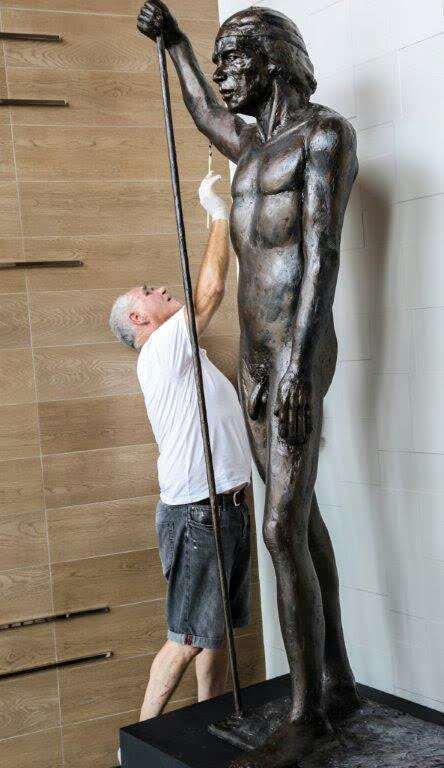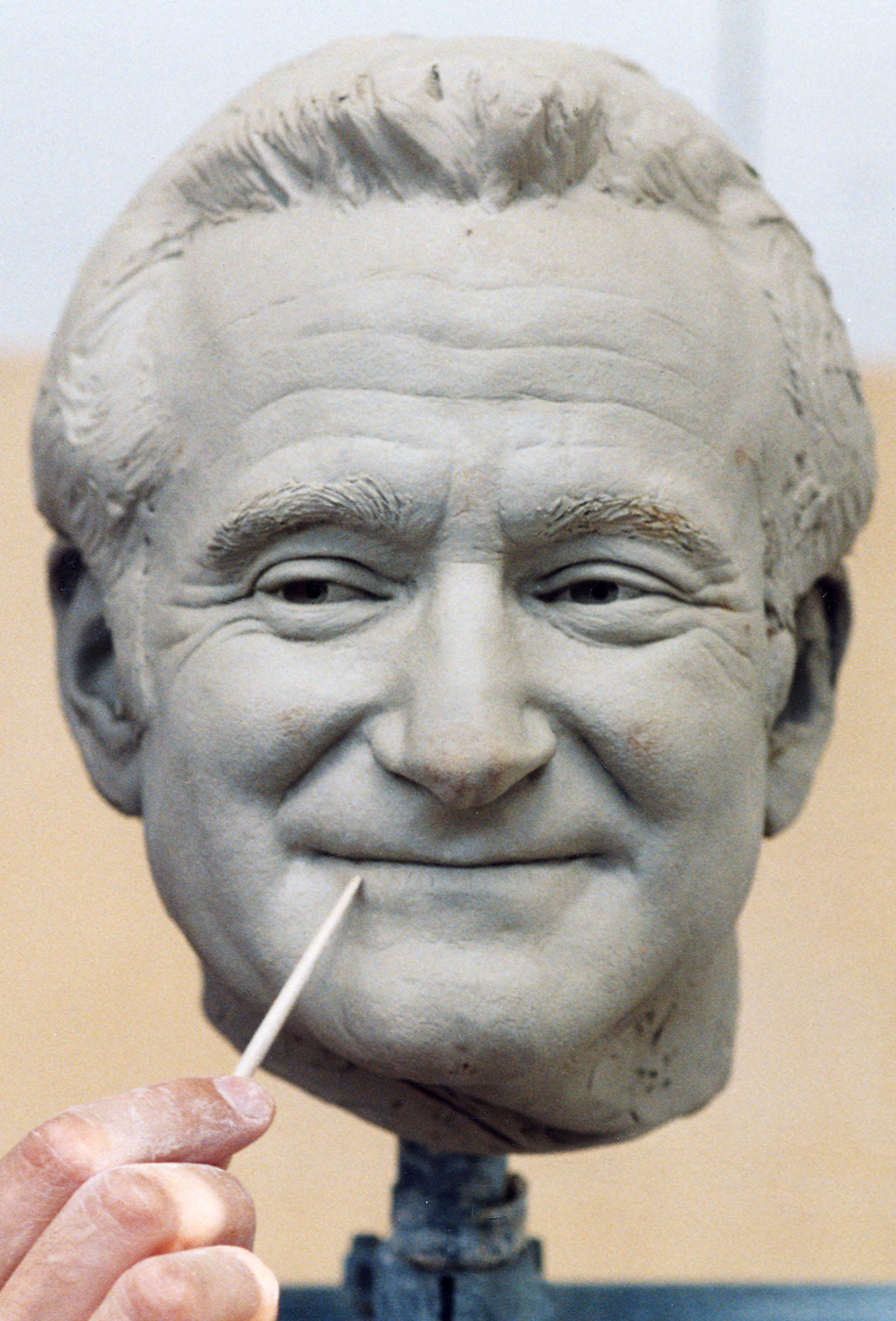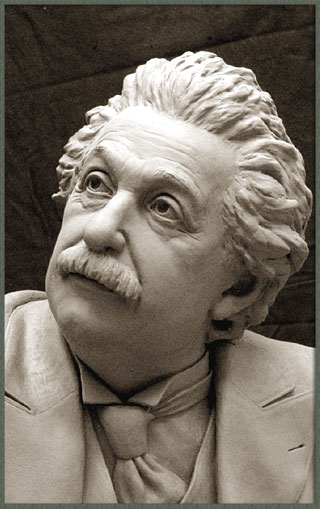Everlasting Charm in Bronze: Revealing the Art of Bronze Sculptures
Wiki Article
The Advancement of Sculptures: From Old to Modern
The Advancement of Sculptures: From Old to Modern.Sculpture, among the oldest types of art, has actually been an integral component of human people for centuries (Robert C Hitchcock Sculptor). From the old civilizations of Egypt and Greece to the contemporary period, sculptures have actually advanced, showing changes in artistic methods, products, and cultural influences. This trip with time traces the growth of sculptures, exploring the shifts in vogue, topic, and artistic expression
Starting with the old world, sculptures crafted from rock and later bronze caught the essence of divine beings, leaders, and everyday life. The Renaissance duration experienced a resurgence of classic sculpting methods, as musicians sought to emulate the elegant types of old Greek and Roman sculptures. In the modern-day age, musicians challenged traditional limits, welcoming abstraction and testing with new materials.

This expedition will explore the diverse development of sculptures, disclosing the abundant tapestry of creative expression throughout different durations and societies.
Ancient Sculptures: From Rock to Bronze
Old sculptures transitioned from being carved out of stone to being cast in bronze. This change noted a considerable advancement in the art of sculpture, enabling for better improvement and information in the completed works. Rock sculptures, while excellent in their very own right, were restricted by the nature of the material. Stone called for extensive sculpting and forming, frequently resulting in a much more streamlined depiction of the subject.The intro of bronze as a medium for sculptures caused a revolution in creative expression. Bronze offered artists the possibility to create detailed and lifelike kinds that were not possible with stone. The process of casting bronze permitted for the development of multiple duplicates of a sculpture, allowing bigger circulation and conservation of these imaginative masterpieces.
The change from stone to bronze also saw a shift in the subject of sculptures. While stone sculptures mostly illustrated gods, goddesses, and mythical figures, bronze sculptures began to reflect a more comprehensive variety of subjects, including daily people and animals. This expansion of subject issue showcased the versatility and versatility of the bronze medium.
Renaissance Resurgence: Forming in the Timeless Style
The Renaissance resurgence of sculpture observed a revival in the classic style, structure upon the improvements made throughout the transition from rock to bronze in old sculptures. During this duration, musicians sought to recreate the classical aesthetic and ideals of beauty that prevailed in ancient Greek and Roman sculptures.One of the crucial attributes of the Renaissance rebirth was the focus on naturalism and the human form. Sculptors like Donatello and Michelangelo make every effort to record the anatomical information and expressions of their topics with unmatched accuracy. They studied the body and integrated their observations into their sculptures, causing lifelike and reasonable representations.
Another crucial element of the Renaissance revival was the expedition of viewpoint and depth. Artists made use of techniques such as contrapposto, where the weight of the body is shifted away, creating a sense of motion and dynamism. They additionally explore various products, including marble and bronze, to achieve a level of refinement and details in their sculptures.
The classical design of the Renaissance resurgence had a profound impact on later periods of art, functioning as a structure for the growth of Western sculpture. It brought a renewed admiration for the charm and majesty of the human kind, and its legacy can still be seen in contemporary sculptures today.
Innovation and the Avant-Garde: Breaking Traditional Borders

One of the crucial attributes of modernist sculpture was the emphasis on abstraction. Sculptors relocated far from reasonable depictions and instead focused on capturing the essence of the subject via streamlined types and geometric forms. This departure from conventional depiction enabled musicians to share their emotions and ideas in a more individual and subjective way.
Additionally, the avant-garde movement challenged social norms and conventions, urging artists to experiment and press the boundaries of their art - Equine Sculptures. Artists started incorporating unconventional materials such as found items, commercial materials, and also natural components into their job. This exploration of brand-new products and methods not only broadened the possibilities for sculpture but also tested the conventional ideas of what might be thought about art
Contemporary Sculptures: Exploring New Materials and Concepts
With a concentrate on checking out new materials and ideas, modern sculptures have actually revolutionized the area of art. Artists today are pushing the limits of standard sculpture by making use of ingenious products and exploring with abstract principles. These sculptures challenge standard concepts of materiality, form, and significance, inviting visitors to take part in a provocative and brand-new artistic experience.Contemporary artists are embracing a large range of products, consisting of plastic, glass, metal, and also raw material. Bronze Sculptures. They are not limited to the typical tool of rock or clay, permitting greater freedom of expression and testing. This change towards unconventional materials has actually opened brand-new opportunities for artists to develop sculptures that are vibrant, interactive, and visually striking
In enhancement to exploring brand-new products, contemporary sculptures likewise explore complicated and abstract principles. Musicians are now checking out styles such as identification, social concerns, and the environment, using sculpture as an effective tool for social discourse and self-contemplation. These sculptures test visitors to think seriously and involve with art on a deeper level, sparking conversations and prompting psychological reactions.
Worldwide Impacts: Sculptural Traditions From All Over The World

In ancient Egypt, sculptures were produced mainly for spiritual and funerary functions. The legendary sculptures of pharaohs and gods, such as the Great Sphinx and the bust of Queen Nefertiti, showcase the Egyptians' mastery of stone sculpting and their idea in the immortality.
In old Greece, sculpture reached its optimal during the classical duration. Influenced by the ideals of percentage, elegance, and harmony, Greek sculptures emphasized the human type and celebrated the accomplishments of gods, athletes, and heroes. The well-known sculptures of Aphrodite of Knidos and the Discobolus exemplify the Greeks' search of perfection in sculptural art.
In old Rome, sculpture offered both political and creative objectives. Portrait Sculptor. Roman sculptures frequently portrayed emperors, generals, and mythical numbers, reflecting the power and majesty of the empire. The marble statuary of Augustus of Prima Porta and the significant Arc of Constantine are significant examples of Roman sculptural achievements
Eastern sculptural practices, especially in India, China, and Japan, have additionally had an extensive effect on the advancement of sculptures. Indian sculptures, such as the intricately carved holy places of Khajuraho and the gigantic sculptures of Buddha, display a rich combination of religious, mythical, and building elements. Chinese sculptures, identified by their fine craftsmanship and interest to detail, often portray divine beings, pets, and famous numbers. Japanese sculptures, influenced by Buddhism, stress simpleness and peace, seen in the tranquil statuaries of Buddha and the sophisticated art of bonsai.
The international influences on sculpture continue to advance in the modern era. As we look to the future, it is specific that the international impacts on sculpture will Figurative Sculptures certainly continue to form and redefine this ancient art kind.
Final Thought
In conclusion, the development of sculptures has seen a shift from ancient stone and bronze works to the classical revival throughout the Renaissance. This was adhered to by the splitting of standard limits with modernism and the avant-garde motion. Today, contemporary sculptures check out new products and ideas, while also drawing ideas from global sculptural traditions. The journey of sculptures reflects the ever-changing artistic expressions and social influences throughout background.From the ancient human beings of Egypt and Greece to the contemporary age, sculptures have actually advanced, reflecting adjustments in imaginative methods, materials, and social influences.Beginning with the old globe, sculptures crafted from stone and later on bronze caught the essence of divine beings, rulers, and day-to-day life.Ancient sculptures transitioned from being carved out of stone to being cast in bronze. While rock sculptures primarily depicted gods, sirens, and mythical numbers, bronze sculptures started to show a wider array of subjects, consisting of day-to-day individuals and animals.In final thought, the advancement of sculptures has actually seen a change from old stone and bronze works to the timeless resurgence during the Renaissance.
Report this wiki page